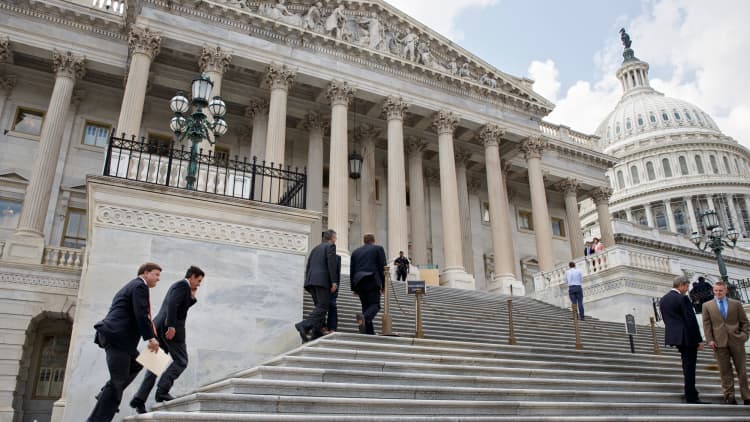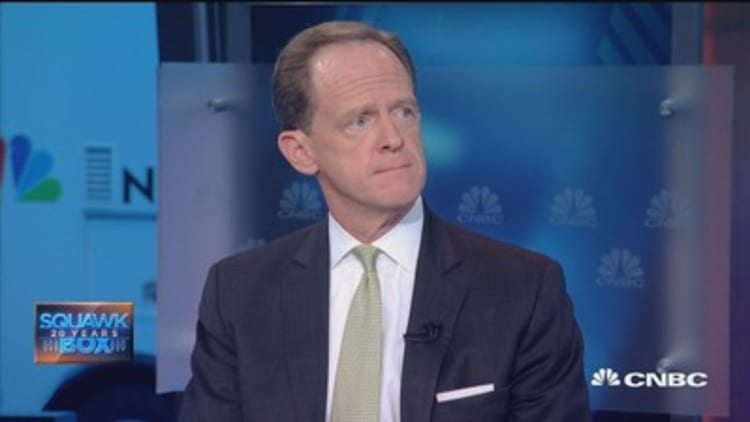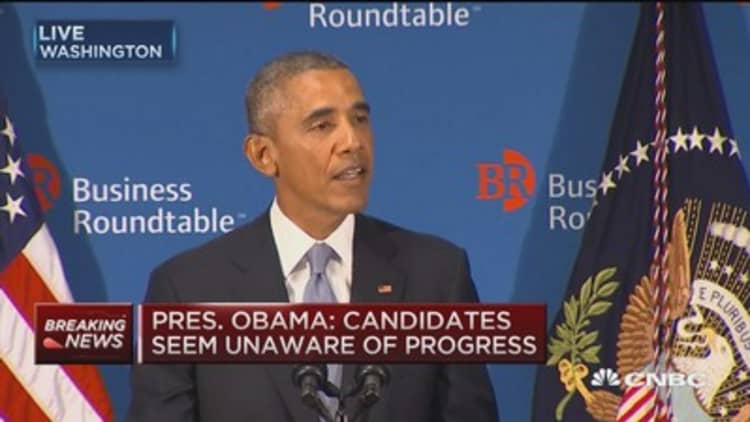


The possibility of a government shutdown is creeping up the list of issues that could pressure markets.
With the Federal Reserve's September meeting soon to be out of the way, Wall Street's attention could turn to the debate in Congress over the budget and debt ceiling.
Strategists note two key time frames investors should watch: the end of the fiscal year on Sept. 30 and the debt ceiling debate from mid-November to the end of the calendar year.
There will "probably be a temporary extension of the budget until we get to the debt ceiling deadline," said Dan Clifton, partner and head of policy research at Strategas. A subsequent, short selloff would be a "buy opportunity."
On the other hand, Clifton said, "the debt ceiling is a lot more toxic to the market because of the U.S. government's ability to pay back its debts. Equities sell off, short rates go higher. None of that is good for confidence."
If the debt ceiling isn't raised, the fear is the U.S. government would be unable to fund itself, possibly falling into the unprecedented condition of default and trigger a severe financial crisis. In that situation, unemployment would rise, the dollar would decline and send prices higher, stocks would plunge, and fund flows would stall with higher borrowing costs and uncertainty over the value of U.S. debt.
Read MoreLew: Raise debt limit to stop 'unnecessary risks'
When Congress wrestled over the debt limit in the summer of 2011, Standard & Poor's downgraded the U.S. credit rating for the first time from "AAA" to "AA-plus" with a negative outlook. The rating has remained unchanged since.
"U.S. Treasurys are used to price other assets," said Ed Clissold, U.S. market strategist at Ned Davis Research. "So if Treasurys are no longer the risk-free rate, it puts (investing) models and Wall Street into flux."
To be sure, he said, "It's a very low probability."
In the near term, a government shutdown is the first concern. Two years ago Republican opposition to President Barack Obama's health-care law shut down the federal government for more than two weeks. This year, the budget talks could reach another impasse since many GOP legislators want to defund Planned Parenthood.
Barring fallout over funding, most analysts expect Congress to pass a continuing resolution that keeps the government open until sometime in December.
That debate is also "going to show up on the radar just as the primary season starts to heat up. It's going to strongly hamper Congress' ability to negotiate this," said Brad McMillan, chief investment officer at Commonwealth Financial.
Iowa is scheduled to host the first caucus on Feb. 1, 2016, followed by the New Hampshire primary on Feb. 9.
"If the government shutdown and potential deficit becomes something significant, there is a possibility that you could have a scenario that is similar to 2011, where the market focuses only on this," Clissold said. Still, "at this point, it looks unlikely."
As debate raged in Congress in 2011, stocks suffered extreme volatility and lost about 19 percent from peak to trough.
Markets today could still face further volatility if the Fed finds pause from a possible government shutdown and doesn't raise rates Thursday, some analysts said.
Read MoreWill Congress inadvertently halt a rate hike?
"The last time we had a shutdown, in early October of 2013, the markets shrugged. But there's a complication this time: The Federal Reserve will be considering a rate hike in December, and the threat of a budget crisis could preclude the Fed from moving. So this adds an element of uncertainty to monetary policy, and markets dislike uncertainty," said Gregory Valliere, chief political strategist at Potomac Research Group.
While chair of the Fed in September 2013, Ben Bernanke said the debt limit issue was among the factors in the Fed's discussions. The central bank decided not to taper at that meeting.
"The Fed is aware of the debt ceiling debate although they don't say it directly, it could be an additional reason … for the Fed to come out and keep a hold," said Michael Arone, chief investment strategist for the intermediary business at State Street Global Advisors.
The volatility could be short lived. Many analysts said the market has gotten "desensitized" since the shock from the debt ceiling crisis in 2011 and would not have as severe a reaction. Improvement in the economy and earnings could also help stocks still end the year with slight gains, some said.
"Generally the markets (say), we've seen this movie before," said Eric Stein, co-director of global fixed income at Eaton Vance Management. "You'll see more and more chatter about it and I wouldn't … be too concerned about it unless you're looking for a reason to be bearish."
Compared to the 2011 plunge, the S&P only lost about 4 percent amid the fall 2013 Congressional debate and 16-day government shutdown. An extended dispute over the health-care law stalled a temporary funding bill and kept about 800,000 federal employees from working.
"The economic environment is much different than it was back in 2011," said Greg Woodard, a portfolio strategist at Manning & Napier. "You look back then, people were questioning the sustainability of the U.S. economy. Today people here have much more confidence in the European economy. … Certainly investors are concerned about a slowdown in China, (but) not implosion."
Concerns about spillover from slowdown in the world's second-largest economy plunged the major U.S averages into correction in August. As of Tuesday's close, the S&P 500 was down 3.9 percent for the year so far, while the Nasdaq composite was up 2.6 percent year to date. The Dow was off nearly 6.9 percent for 2015.
"We believe a government shutdown would add to the recent decline we have seen in the markets over the last 30 days," said Dan Heckman, national investment consultant at U.S. Bank.
But that is not their base case. "We believe that earnings for the third quarter have been reduced enough to create an environment where we could see upside surprises from companies and consequently a rally into year end," he said.
Read More Market outlook for 2016 already looking shaky
At this point in the political cycle, history also favors annual gains for the S&P.
Ned Davis' Clissold noted the S&P 500 usually posts positive returns for the year prior to an election. The last time the S&P failed to end a pre-election year higher was in the volatile 2011, and that was with a loss of just 0.04 percent. The only negative pre-election year before that was in 1939, he said.


